Novel positron emission tomography radiotracers in brain tumor imaging
- PMID: 22013296
- PMCID: PMC3190493
- DOI: 10.4103/0971-3026.85369
Novel positron emission tomography radiotracers in brain tumor imaging
Abstract
Although [18F] 2-fluoro-2-deoxy-D-glucose (FDG) is the most widely used radiopharmaceutical the world over, it is not the ideal tracer for brain imaging, owing to its high physiological cortical uptake and lack of specificity. This has paved the way for the introduction of several novel radiotracers, each with their own inherent strengths and limitations. We present the insights gained from the use of these radiotracers at our institution.
Keywords: Brain tumor; Novel Positron emission tomography radiotracers.
Conflict of interest statement
Figures
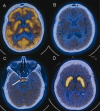
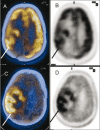
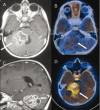


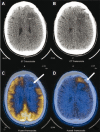

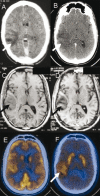



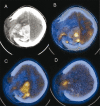
Similar articles
-
Usefulness of FDG-PET scan in the assessment of suspected metastatic or recurrent adenocarcinoma of the colon and rectum.Dis Colon Rectum. 2000 Jun;43(6):759-67; discussion 767-70. doi: 10.1007/BF02238010. Dis Colon Rectum. 2000. PMID: 10859074
-
[18F] 3-deoxy-3'-fluorothymidine positron emission tomography: alternative or diagnostic adjunct to 2-[18f]-fluoro-2-deoxy-D-glucose positron emission tomography in the workup of suspicious central focal lesions?J Thorac Cardiovasc Surg. 2004 Apr;127(4):1093-9. doi: 10.1016/j.jtcvs.2003.09.003. J Thorac Cardiovasc Surg. 2004. PMID: 15052207
-
New PET radiopharmaceuticals beyond FDG for brain tumor imaging.Q J Nucl Med Mol Imaging. 2012 Apr;56(2):173-90. Q J Nucl Med Mol Imaging. 2012. PMID: 22617239 Review.
-
Comparison of Positron Emission Tomography Using 2-[18F]-fluoro-2-deoxy-D-glucose and 3-deoxy-3-[18F]-fluorothymidine in Lung Cancer Imaging.Chin Med J (Engl). 2016 Dec 20;129(24):2926-2935. doi: 10.4103/0366-6999.195468. Chin Med J (Engl). 2016. PMID: 27958224 Free PMC article.
-
Utility of positron emission tomography in sarcomas.Curr Opin Oncol. 2006 Jul;18(4):369-73. doi: 10.1097/01.cco.0000228744.49294.12. Curr Opin Oncol. 2006. PMID: 16721133 Review.
Cited by
-
Monte Carlo Characterization of the Trimage Brain PET System.J Imaging. 2022 Jan 23;8(2):21. doi: 10.3390/jimaging8020021. J Imaging. 2022. PMID: 35200724 Free PMC article.
-
Combined (18)F-FDG and (11)C-Methionine PET/CT scans in a case of metastatic hepatocellular carcinoma.Indian J Nucl Med. 2014 Jul;29(3):171-4. doi: 10.4103/0972-3919.136579. Indian J Nucl Med. 2014. PMID: 25210286 Free PMC article.
References
-
- Patronas NJ, Chiro G, Brooks RA, DeLaPaz RL, Kornblith PL, Smith BH, et al. Work in progress: [18F] fluorodeoxyglucose and positron emission tomography in the evaluation of radiation necrosis of the brain. Radiology. 1982;144:885–9. - PubMed
-
- Kracht LW, Miletic H, Busch S, Jacobs AH, Voges J, Hoevels M, et al. Delineation of brain tumor extent with [11C]L-methionine positron emission tomography: Local comparison with stereotactic histopathology. Clin Cancer Res. 2004;10:7163–71. - PubMed
-
- Jager PL, Vaalburg W, Pruim J, Vries EG, Langen KJ, Piers DA. Radiolabeled amino acids: Basic aspects and clinical applications in oncology. J Nucl Med. 2001;42:432–45. - PubMed
LinkOut - more resources
Full Text Sources
Other Literature Sources

